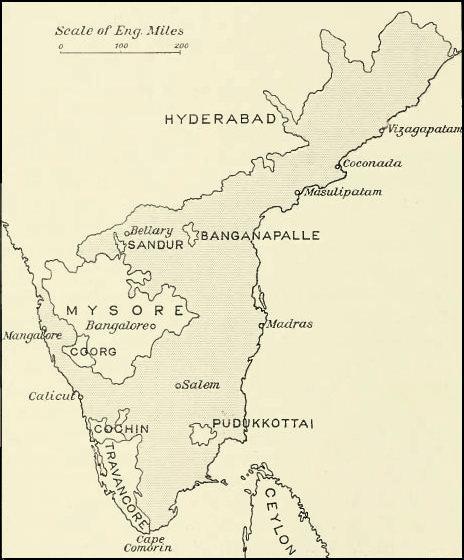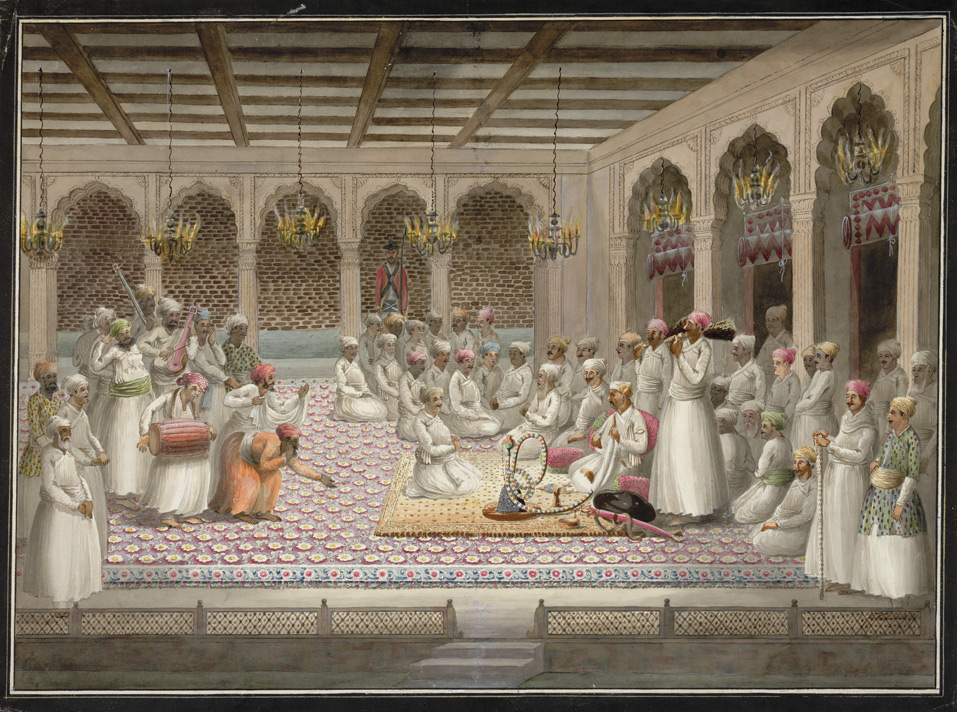|
Najm-i-Sani Dynasty
The Najm-i-Sani dynasty (also spelled ''Najam-es-Sani'') was a Muslim dynasty of rulers in India. It is founded by Nawab Ali Quli Khan Bahadur, who was minister to Emperor Aurangzeb (reigned 1658 to 1707), and founder of the following lines: *The first dynasty of Nawabs of Banganapalle Banganapalle State was one of the princely states of India during the period of the British Raj. The state was founded in 1665 and had its capital in Banganapalle. Its rulers were Shia Muslims and the last one signed the accession to the Indian ..., (before 1665 to 1769) *The Nawabs of Masulipatam, (before 1731 to after 1883) *The Cambay State. References Nawabs of India Shia dynasties Mughal Empire {{Mughal-stub ... [...More Info...] [...Related Items...] OR: [Wikipedia] [Google] [Baidu] |
British Raj
The British Raj (; from Hindi ''rāj'': kingdom, realm, state, or empire) was the rule of the British Crown on the Indian subcontinent; * * it is also called Crown rule in India, * * * * or Direct rule in India, * Quote: "Mill, who was himself employed by the British East India company from the age of seventeen until the British government assumed direct rule over India in 1858." * * and lasted from 1858 to 1947. * * The region under British control was commonly called India in contemporaneous usage and included areas directly administered by the United Kingdom, which were collectively called British India, and areas ruled by indigenous rulers, but under British paramountcy, called the princely states. The region was sometimes called the Indian Empire, though not officially. As ''India'', it was a founding member of the League of Nations, a participating nation in the Summer Olympics in 1900, 1920, 1928, 1932, and 1936, and a founding member of the United Nations in San F ... [...More Info...] [...Related Items...] OR: [Wikipedia] [Google] [Baidu] |
Nawab Of Banganapalle
Banganapalle State was one of the princely states of India during the period of the British Raj. The state was founded in 1665 and had its capital in Banganapalle. Its rulers were Shia Muslims and the last one signed the accession to the Indian Union on 23 February 1948. See also *Nawab of Masulipatam *Masulipatam *Nizam of Hyderabad The Nizams were the rulers of Hyderabad from the 18th through the 20th century. Nizam of Hyderabad (Niẓām ul-Mulk, also known as Asaf Jah) was the title of the monarch of the Hyderabad State ( divided between the state of Telangana, Mar ... * Formation of Andhra Pradesh References {{Authority control Princely states of India Muslim princely states of India Shia dynasties History of Andhra Pradesh Kurnool district 1665 establishments in India 1948 disestablishments in India ... [...More Info...] [...Related Items...] OR: [Wikipedia] [Google] [Baidu] |
Nawab Of Masulipatnam
The Nawabs of Masulipatam ruled under the Nizam in eastern India. The best known of them was Nawab Haji Hassan Khan. Their title later became Nawab of Banganapalle as they shifted from Masulipatam to Banganapalle. They belong to the Najm-i-Sani Dynasty. List of nawabs The Najm-i-Sani dynasty See also *Nawab of Banganapalle *Nizam of Hyderabad *Nawab of Carnatic The Carnatic Sultanate was a kingdom in South India between about 1690 and 1855, and was under the legal purview of the Nizam of Hyderabad, until their demise. They initially had their capital at Arcot in the present-day Indian state of Tamil N ... Nawabs of India People from Hyderabad State {{India-royal-stub ... [...More Info...] [...Related Items...] OR: [Wikipedia] [Google] [Baidu] |
Cambay State
Cambay, Kambay or Khambhat was a princely state in India during the British Raj. The City of Khambat (Cambay) in present-day Gujarat was its capital. The state was bounded in the north by the Kaira district and in the south by the Gulf of Cambay. Cambay was the only state in the Kaira Agency of the Gujarat division of the Bombay Presidency, which merged into the Baroda and Gujarat States Agency in 1937. History Cambay was founded as a state in 1730 by the penultimate Nawab of the Mughal Empire, Mirza Ja‘far Mu’min Khan I, the last of the Mughal governors of Gujarat, at the time of the dismemberment of Mughal rule in India. In 1742 Mirza Ja‘far Mu’min Khan I defeated his brother-in-law Nizam Khan, governor of Khambhat, and established himself in his place. In 1780 Cambay was taken by the British Army, led by General Goddard Richards, but it was restored to the Marathas in 1783. Finally it was ceded to the British by the Peshwa after the Treaty of Bassein in 1803. Cam ... [...More Info...] [...Related Items...] OR: [Wikipedia] [Google] [Baidu] |
Nawab
Nawab (Balochi language, Balochi: نواب; ar, نواب; bn, নবাব/নওয়াব; hi, नवाब; Punjabi language, Punjabi : ਨਵਾਬ; Persian language, Persian, Punjabi language, Punjabi , Sindhi language, Sindhi, Urdu: ), also spelled Nawaab, Navaab, Navab, Nowab, Nabob, Nawaabshah, Nawabshah or Nobab, is a Royal title indicating a sovereign ruler, often of a South Asian state, in many ways comparable to the western title of Prince. The relationship of a Nawab to the Emperor of India has been compared to that of the Kingdom of Saxony, Kings of Saxony to the German Emperor. In earlier times the title was ratified and bestowed by the reigning Mughal emperor to semi-autonomous Muslim rulers of subdivisions or princely states in the Indian subcontinent loyal to the Mughal Empire, for example the Nawabs of Bengal. The title is common among Muslim rulers of South Asia as an equivalent to the title Maharaja. "Nawab" usually refers to males and literally mea ... [...More Info...] [...Related Items...] OR: [Wikipedia] [Google] [Baidu] |
Nawab Ali Quli Khan Bahadur
Nawab Ali Quli Mirza Bahadur was the ancestor of Nawabs of Banganapalle and Masulipatam. He belongs to The Najm-i-Sani Dynasty. Genealogy He was elder son of Faiz Beg Najm-i-Sani, and grandson of Nawab Mirza Muhammad Bakir Khan Najm-i-Sani a Grandson of the Ottoman Prince Şehzade Ahmet, sometime Subadar of Multan, Oudh, Orissa, Gujarat and Delhi. He was Wazir to Emperor Aurangzeb. His grandfather was married to a sister of Imad ul-Mulk, Nawab Khwaja Muhammad Mubariz Khan Bahadur, Hizbar Jang, sometime ''Subadar of the Deccan'' and '' Wazir''. Nawab Ali Quli Khan Bahadur had three sons, *Fazl Ali Khan Bahadur, Qiladar of Chenchelimala. *Faiz Ali Khan Bahadur, Sometime Qiladar of Banganapalle and Chenchelimala, ancestor of the Nawabs of Banganapalle. *Yusuf Khan Bahadur, father of Nawab Muhammad Taqi Khan Bahadur, Nawab of Masulipatam. Titles held *Subadar of Multan, Oudh, Orissa, Gujarat and Delhi. * Wazir to Emperor Aurangzeb. See also *Nawab of Carnatic *Nawab of Banganapa ... [...More Info...] [...Related Items...] OR: [Wikipedia] [Google] [Baidu] |
Aurangzeb
Muhi al-Din Muhammad (; – 3 March 1707), commonly known as ( fa, , lit=Ornament of the Throne) and by his regnal title Alamgir ( fa, , translit=ʿĀlamgīr, lit=Conqueror of the World), was the sixth emperor of the Mughal Empire, ruling from July 1658 until his death in 1707. Under his emperorship, the Mughals reached their greatest extent with their territory spanning nearly the entirety of South Asia. Widely considered to be the last effective Mughal ruler, Aurangzeb compiled the Fatawa 'Alamgiri and was amongst the few monarchs to have fully established Sharia and Islamic economics throughout South Asia.Catherine Blanshard Asher, (1992"Architecture of Mughal India – Part 1" Cambridge university Press, Volume 1, Page 252. Belonging to the aristocratic Timurid dynasty, Aurangzeb's early life was occupied with pious pursuits. He held administrative and military posts under his father Shah Jahan () and gained recognition as an accomplished military commander. Aurang ... [...More Info...] [...Related Items...] OR: [Wikipedia] [Google] [Baidu] |
Nawab Of Masulipatam
The Nawabs of Masulipatam ruled under the Nizam in eastern India. The best known of them was Nawab Haji Hassan Khan. Their title later became Nawab of Banganapalle as they shifted from Masulipatam to Banganapalle. They belong to the Najm-i-Sani Dynasty. List of nawabs The Najm-i-Sani dynasty See also *Nawab of Banganapalle Banganapalle State was one of the princely states of India during the period of the British Raj. The state was founded in 1665 and had its capital in Banganapalle. Its rulers were Shia Muslims and the last one signed the accession to the Indian ... * Nizam of Hyderabad * Nawab of Carnatic Nawabs of India People from Hyderabad State {{India-royal-stub ... [...More Info...] [...Related Items...] OR: [Wikipedia] [Google] [Baidu] |
Nawabs Of India
Nawab ( Balochi: نواب; ar, نواب; bn, নবাব/নওয়াব; hi, नवाब; Punjabi : ਨਵਾਬ; Persian, Punjabi , Sindhi, Urdu: ), also spelled Nawaab, Navaab, Navab, Nowab, Nabob, Nawaabshah, Nawabshah or Nobab, is a Royal title indicating a sovereign ruler, often of a South Asian state, in many ways comparable to the western title of Prince. The relationship of a Nawab to the Emperor of India has been compared to that of the Kings of Saxony to the German Emperor. In earlier times the title was ratified and bestowed by the reigning Mughal emperor to semi-autonomous Muslim rulers of subdivisions or princely states in the Indian subcontinent loyal to the Mughal Empire, for example the Nawabs of Bengal. The title is common among Muslim rulers of South Asia as an equivalent to the title Maharaja. "Nawab" usually refers to males and literally means ''Viceroy''; the female equivalent is "Begum" or "''Nawab Begum''". The primary duty of a Nawab was to ... [...More Info...] [...Related Items...] OR: [Wikipedia] [Google] [Baidu] |
Shia Dynasties
Shīʿa Islam or Shīʿīsm is the second-largest branch of Islam. It holds that the Islamic prophet Muhammad designated ʿAlī ibn Abī Ṭālib as his successor (''khalīfa'') and the Imam (spiritual and political leader) after him, most notably at the event of Ghadir Khumm, but was prevented from succeeding Muhammad as the leader of the Muslims as a result of the choice made by some of Muhammad's other companions (''ṣaḥāba'') at Saqifah. This view primarily contrasts with that of Sunnī Islam, whose adherents believe that Muhammad did not appoint a successor before his death and consider Abū Bakr, who was appointed caliph by a group of senior Muslims at Saqifah, to be the first rightful (''rāshidūn'') caliph after Muhammad. Adherents of Shīʿa Islam are called Shīʿa Muslims, Shīʿītes, or simply Shīʿa or Shia. Shīʿa Islam is based on a ''ḥadīth'' report concerning Muhammad's pronouncement at Ghadir Khumm.Esposito, John. "What Everyone Needs to Kno ... [...More Info...] [...Related Items...] OR: [Wikipedia] [Google] [Baidu] |





